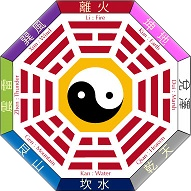
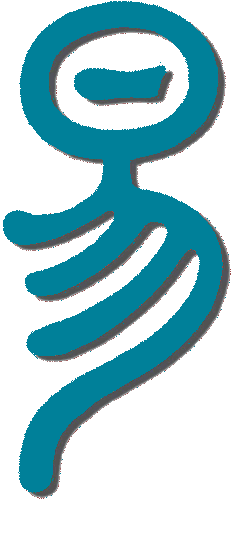
I Ching Explorer

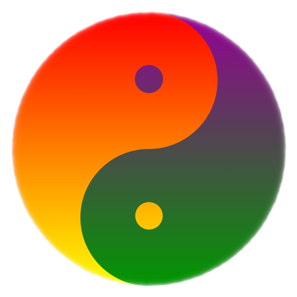
-
☯I Ching Basics
-
☯Consulting I Ching
-
☯Chinese Zodiac
-
☯I Ching Resources
-
If you like our web site and find it useful - donate with PayPal to support new development
Reading Layout
So, you have made your enquiry to I Ching and got your casted hexagram. Now you want to know, what to do next and how to interpret
received results in a best, most accurate way.
This section outlines a roadmap you can use to get your reading and interpretation process in orderly manner.
To reflect different proficiency levels of users making I Ching inquiries we will be following the adopted in this web portal
three level approach. We are recognizing three main groups of users, based on their experience with I Ching:
- Mainstream Level Group
- Advanced Level Group
- Expert-Level Group
Mainstream Level Reading
Target Audience.
This section is for everyone, but especially for those who is new to I Ching and who just started exploring its internal beauty.
It suits also well to express readings when you simply want to get a detailed answer for your question in a quick and concise
manner without deep diving into all-inclusive interdependent hexagram Universe.
So, let’s start - frame your question to I Ching, use your preferred casting method and get the primary hexagram.
This Hexagram is a first step in exploring your situation. There are at least 5 other, important satellite hexagrams
deeply related to your primary hexagram which you need to consider too – it is Nuclear, Inversed Opposite,
Reversed, Rotated and Evolutional hexagrams.
There is also a group of progressed hexagrams - potentially up to six - if your casted primary hexagram has moving lines.
Similar to how Yin and Yang complement each other and enpower everything in this world, these two groups -
the static and dynamic hexagram transformations - complement each other helping to create a unified 360 degrees view
on a situation revolving around your casted hexagram.
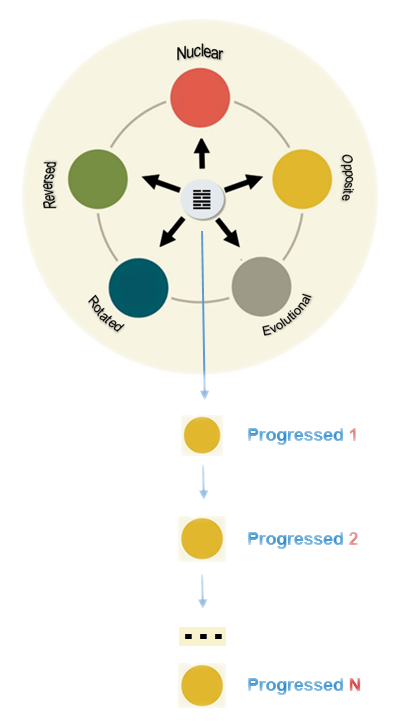
The top group of 5 hexagrams - the head of our diagram - are based on monogram-level transformations: Nuclear, Opposite,
Reversed, Rotated and Evolutional. They depict the closest “relatives” of primary hexagram and can be applied to any
casted hexagram - with or without moving lines.
Second group - the tail of our reading layout diagram - depicts the progression of any change in your situation as specified
by moving lines of your primary hexagram.
Advanced Level Reading
Target Audience.
If you are a confident I Ching Scholar who wants to explore additional dimensions of I Ching divination and to make a deeper
dive into the reading and interperetation of casting results - use this section.
Described above mainstream reading layout was based upon 2 groups of satellite hexagrams orbiting the primary hexagram:
- Monogram-based transformed hexagrams group
- Group of progressed hexagrams
- Monogram-based transformed hexagrams group
- Digram-based transformed hexagrams group
- Group of progressed hexagrams
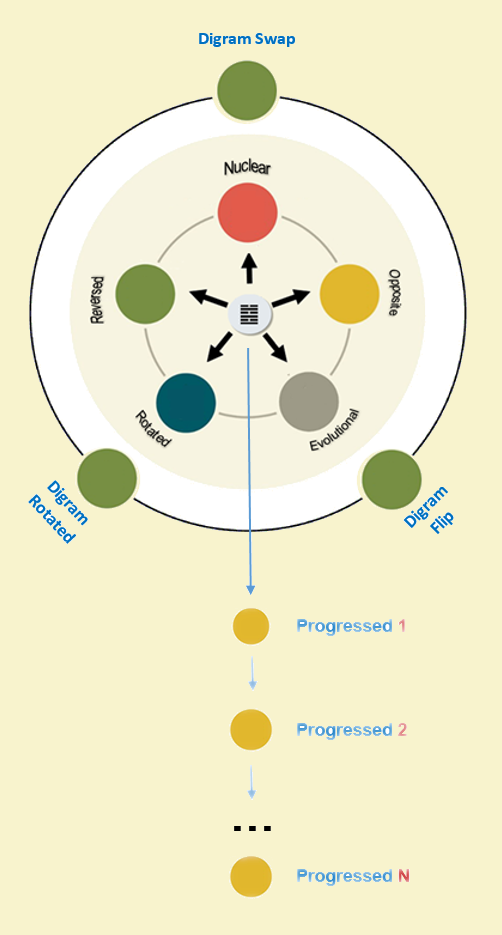
Expert Level Reading
Target Audience.
If you are the experienced long-term I Ching Diviner who wants to explore new, modern dimensions of I Ching - you are in the right place.
Presented here reading layout brings together all knowledge of static and dynamic hexagram transformations. It combines
all monograms-, digrams- and trigrams transformation techniques with enhanced progressed hexagram layout, which includes
now three new dynamic transformations - Yin-Change-Operator, Yang-Change-Operator and Anti-Hexagram transformation -
joining them all into one, all-inclusive reading layout.
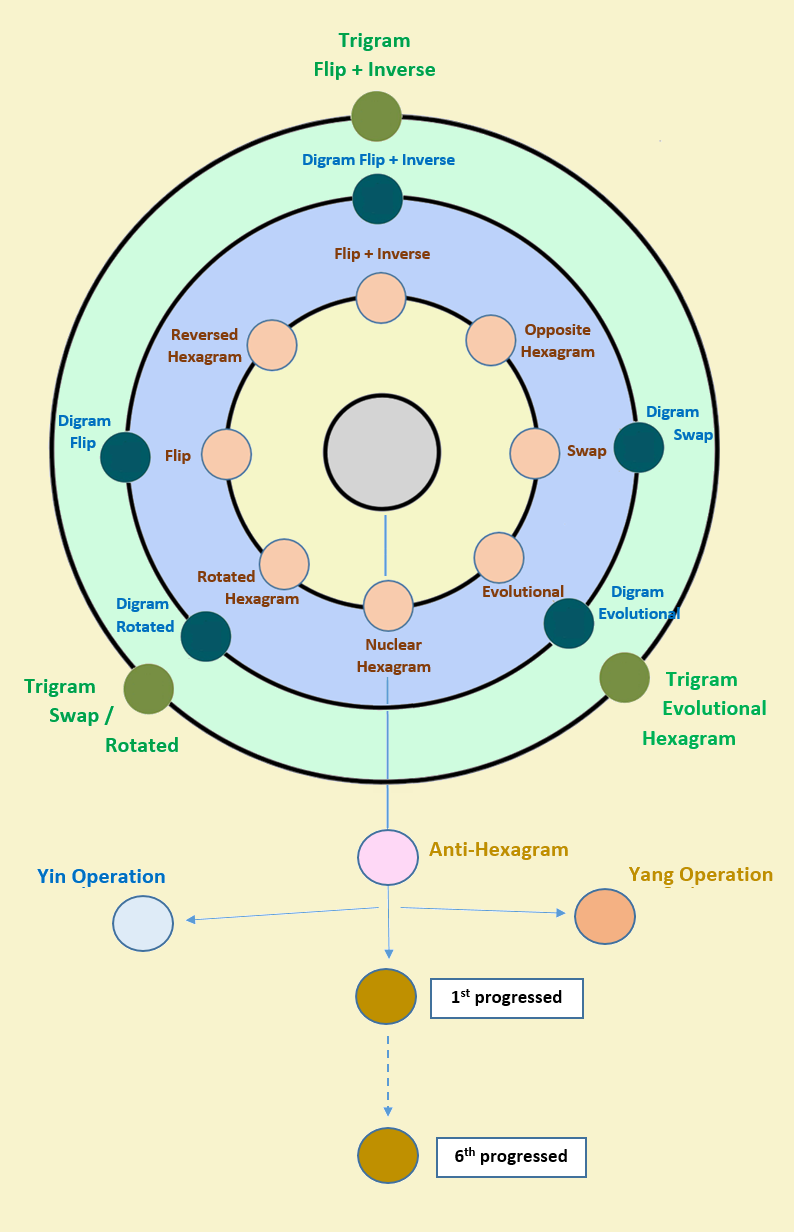
Below picture shows all three reading layouts side-by-side.
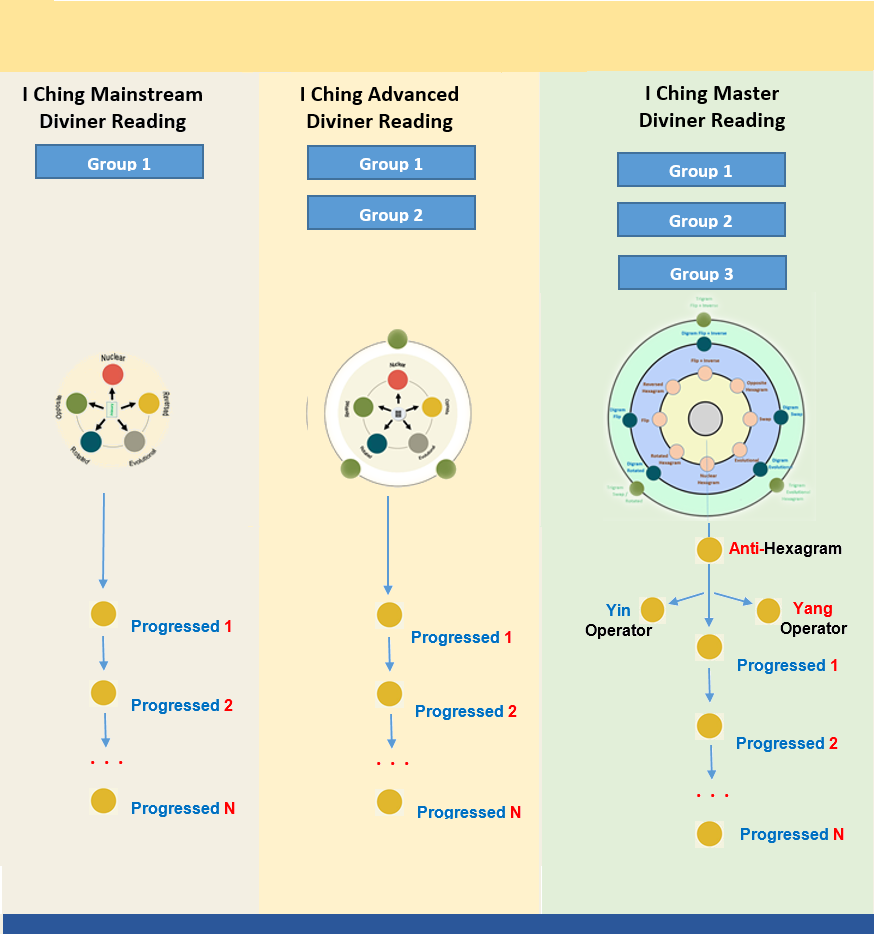
If your casted hexagram has multiple moving lines, then this change can be interpreted in the multiple, alternative, and
most importantly - not always agreeing with each other - ways.
Which of these interpretations to use in your reading - it is a matter of your personal choice.
While there is no One True Right Way to get the "final" reading in the multiple
moving lines case and all methods, so to say, are "equal", some interpretation techniques look "more equal" than others.
To learn more about existing here alternative approaches feel free to visit our Moving Lines page.
It will help you better understand your options and to choose your very own preferred method of interpretation which works best for you.
Our preferred method - used consistently accross all web pages in this portal - is based on so-called
All Lines - Consecutive Progression Approach. This technique is known for its logical
consistency and all inclusive character.
Let's explain how the multiple line reading happens here using the below example.

So, your casted hexagram has multiple moving / changing lines (potentially up to 6) and this is how you do a reading in this case.
- Read the general comment to the primary hexagram. This will shed a light about the situation where you are now. Then read a line comment for the first (closest to the bottom) moving line (line #2 in our example). This line is the ruling line in this transitional phase. It provides additional details on inner forces moving your situation to the next phase. Ignore any other individual line comments in your primary hexagram as it already has started transitioning to a new state.
- Move to the first progressed hexagram. Read the general comment to it, then in the same hexagram read again the closest to the bottom moving line comment (line #4 in our example). This line is the ruling line in this transitional phase. Skip all other line comments.
-
Move to the next progressed hexagram. Read the general comment to it, then in the same way as above
read the line comment for the next, closest to the bottom moving line (line #5 in our example).
This is the ruling line in this transitional phase - it highlights important details on how transtion to the next phase happens.
Skip other line comments.
Repeat this step #3 until you reach final progressed hexagram. -
Move to final progressed hexagram. This is a last stage of multi-phase change process of your original hexagram.
Read the general comment for that hexagram - it will tell you where your original situation will be after all changes are completed.
Reflect on the whole change procees from the start to the end.
Pay special attention to moving line comments throughout the chain of changes, try to connect them to your question / inquiry and to build a trajectory of changes.
Your full, change-related reading for the multi-step transition of primary hexagram to its final progressed state is completed.
In a nutshell, difference between this all-inclusive approach in handling moving lines and all other alternative techniques
is the same as a difference between a full-length full-format movie and a static photograph. Both provide you with a view
to your inquired situation, but they do it in very different manner.
One approach fully supports and endorces dynamics of situation showing its fluidity and sequential progression in time, when other approaches
provide only a single angle, snapshot-style, isolated view to the situation in question.
Hexagram Reading Card
I Ching hexagrams have thousands of years of history with rich knowledge and numerious commentaries
developed by I Ching Scholars for each of 64 hexagrams. With wide abandance of related information, which
describes the hexagram in question, it is very important to present this info in the unified orderly manner.
To better explain a specifics of used here approach let's consider as example a Hexagram #40, already discussed by us in
Moving Lines and Gua Transformations
pages of this portal.
A Reading Card for hexagram #40 - Removing Obstacles, Relief - will have the following look:
#40 - Removing Obstacles

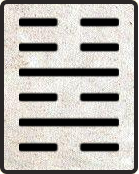
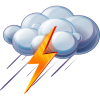

- Other Names: Relief, Deliverance, Abatement of Danger, Liberation.
- Image: Thunder over Water.
-
Ideographic: The ideograph of this hexagram consist of three parts: horn, ox and knife. Taken as a whole this image shows that the horn was cutt-off by knife bringing relieve to the ox.
*Credits:Pictogram Image: Anton Heyboer.
- Core Concepts: Obstacles and difficulties are resolved and advancement is possible again; return as quick as possible to a position of centrality.
- Overall Dynamics: Thunder and Rain set in: The image of Deliverance. Thus the superior man pardons mistakes and forgives misdeeds.
- Internal Qualities: Danger.
- External Qualities: Impulse.
- World of Trigram Symbols: Thunder over Water signifies relieve of tensions after release of thunderstorm.
- World of Digram Symbols: Young Yin in the middle is surrounded by young Yin in the bottom and by a full Yin on the top.
- Element: Wood.
- Month: 2nd month of lunar year (March).
- Attributes: Resolved difficulties.
- Judgement: The south-west furthers. If there is no longer anything where one has to go, return brings good fortune.
- Ruling Lines: 2nd and 4th.
- Auspiciousness: ☀☀ - This is a sign of a good omen. Keep doing what you are doing.
Advice: This is a situation of gradually going out of sphere of danger. But full safety is not achieved yet - it is just beginning and 6 lines in the hexagram represent these steps. Returning to the regular order of life as soon as deliverance is achieved is the way that leads to good fortune.
Scholar Speaking: Tensions and complications begin to ease; situation gradually returns to normal. Start removing obstacles - this will further reduce the tensions. Act swiftly but carefully; do not overdo - success will be coming next.
Shaman Speaking:
To better understand the internal nature and a hidden possibility concealed inside your current situation reflect
on its Nuclear Hexagram: #63 - After Completion. To understand what your situation
is NOT – reflect on its two opposite hexagrams - Inversed Opposite hexagram: #37 - Family
and Reversed Opposite: #39 - Obstruction as well as rotated hexagrams:
Monogram-Rotated #39 - Obstruction, Digram-Rotated
#35 - Easy Progress and Trigram-Rotated #3 - Difficulty at the Beginning.
Pay special attention to the following hexagrams - Monogram-Swap: #40 - Deliverance and Digram-Swap #35 - Easy Progress; Monogram-Flip: #40 - Deliverance and Digram-Flip #45 - Gathering Together as well as three Flip+ hexagrams: Monogram-Flip+ #38 - Opposition, Digram-Flip+ #38 - Opposition and Trigram-Flip+ #38 - Opposition. They shed a light to the possibilities of abrupt changes revolving around your current situation.
Monogram Evolutional hexagram: #63 - After Completion, Digram Evolutional: #38 - Opposition and Trigram Evolutional hexagram #48 - The Well - they highlight possibilities where your current situation can gradually evolve in certain scenarios.